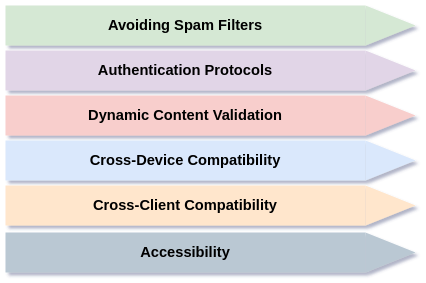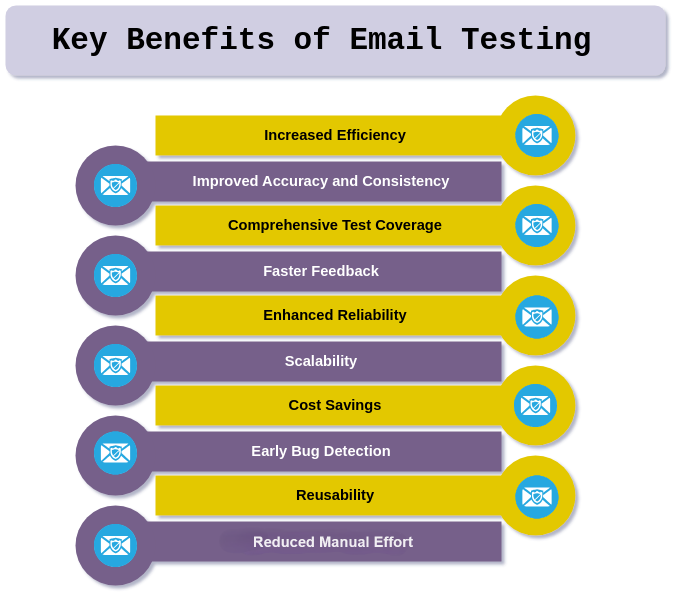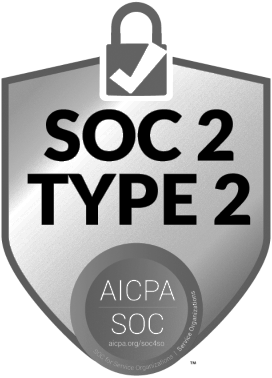Automated Email Testing
Email functionality is now common and important across all applications. Features like user registration, password recovery, marketing communications, and transactional notifications are used in most applications nowadays. Proper testing can ensure that these emails are delivered correctly, displayed properly, and contain appropriate content as expected. Manually testing emails across various client scenarios is time-consuming and error-prone, so automation is a better choice.
What is Email Testing?
Email testing involves verifying the functionality, formatting, and contents of emails sent by an application. It ensures that it is as per the requirements and meets the standards specified. This involves checking that emails are correctly sent to the intended recipients, contain the appropriate content, and are properly formatted across various email clients and devices.
Email testing also involves validating the dynamic contents, attachments, and special characters. This helps in testing that the emails are not marked as spam by the provider.
Why Thorough Email Testing Matters?

Testing the email functionality is crucial for most applications, whether they are web-based, mobile or desktop. Proper testing ensures this functionality works better, as it’s essential for maintaining trust, engagement, and overall satisfaction. Let’s see why email testing is so crucial.
- Avoiding Spam Filters: Because of certain keywords, formatting issues or authentication problems, emails can be flagged as spam. With proper testing, we can identify and correct these issues. This increases the chances of emails reaching the recipient’s inboxes.
- Authentication Protocols: Implementation of testing protocols like SPF (Sender Policy Framework), DKIM (DomainKeys Identified Mail), and DMARC (Domain-based Message Authentication, Reporting, and Conformance) helps verify the authenticity of the email sender. Thus, reducing the risk of emails being blocked or marked as phishing.
- Dynamic Content Validation: Many emails contain dynamic content like names, account details, or pin numbers. Testing ensures that this content is correctly populated for each recipient.
- Cross-Device Compatibility: Most of the email applications are now designed to be responsive. This means the emails should look good and readable if opened on mobile phones, tablets or desktops. Testing ensures the responsive design works fine across all the form factors with different screen sizes and hardware.
- Cross-Client Compatibility: Testing helps to ensure that emails are displayed correctly across every email client like Gmail, Outlook, etc.
- Accessibility: Emails should be accessible to all users, including those with disabilities. Testing helps identify and fix issues related to accessibility, ensuring compliance with standards such as WCAG.
Key Benefits of Implementing Email Testing

Automating email testing offers a wide variety of benefits when compared to manual testing. This not only increases the speed of testing but also increases the reliability.
Let us look into the key benefits of automating email testing.
- Increased Efficiency: By automating email tests, we can execute them quickly and repeatedly without any delay. This reduces the time and effort when compared to manual testing. This helps in validating the email functionalities rapidly especially during regression testing where we need to run extensive test suites frequently.
- Improved Accuracy and Consistency: We cannot completely rely on manual testing because it is prone to human error; because of that, the results are also highly inconsistent. This can be rectified by automating the test cases. Automation provides consistent results and is less prone to human errors. We can execute automation suites frequently, which helps to capture bugs earlier and also reduces the chances of missing issues.
- Comprehensive Test Coverage: Automation helps to increase test coverage. You can cover a wider range of scenarios, including edge cases. Many edge cases that are impossible to cover by manual testing can be covered in automation testing. Through automation, we can have comprehensive test coverage, which includes functionalities like sending, receiving, formatting, and handling attachments.
- Faster Feedback: With automation, we can get immediate feedback, which allows developers to quickly identify the root cause of the issue and fix it. This rapid feedback loop helps in agile development practices. Since there will be frequent release cycles, the team needs to respond faster to the changes.
- Enhanced Reliability: Automated tests can be run continuously without requiring human intervention. This continuous testing ensures that email functionalities are consistently monitored and any issues are promptly detected and resolved. This reliability is particularly important for critical email functionalities like password resets, transaction confirmations, user notifications, etc.
- Scalability: As applications grow, the number of email scenarios that need testing also increases. Automated testing can easily scale to accommodate this growth, running extensive test suites that would be impractical to execute manually. This test scalability is vital for maintaining application quality as it evolves.
- Cost Savings: While there is an initial investment in setting up automated tests, the long-term cost savings are substantial. Automated tests reduce the need for extensive manual testing, freeing up resources for other critical tasks. Over time, this leads to significant cost savings in terms of labor and time.
- Early Bug Detection: Automated email tests can be integrated into the Continuous Integration/Continuous Deployment (CI/CD) pipeline. This ensures that tests are executed every time code changes are made. This integration allows for early detection of bugs, reducing the cost and effort required to fix them later in the development cycle.
- Reusability: Automated test scripts can be reused across different projects and test cycles. This reusability enhances efficiency and reduces the time required to set up new tests for similar functionalities. Once a robust test script is created, it can be leveraged for multiple purposes.
- Reduced Manual Effort: By automating repetitive and mundane testing tasks, you can focus on more strategic and complex testing activities. This shift not only improves the quality of the tests but also enhances job satisfaction and productivity among the testing team.
Exploring Various Email Testing Techniques

Email testing can be performed using various methods, each focusing on different aspects of the email. The goal is to ensure it is effective, error-free, and user-friendly.
Let us explore some of the widely used methods for email testing.
- Functional Testing: Link testing involves verifying that all links in the email are correct and lead to the intended destination. Interactive element testing ensures that buttons, forms, and other interactive elements work properly. Tracking code testing involves checking that tracking codes for opens, clicks, and other metrics are correctly implemented.
- Content Testing: Proofreading involves manually checking for spelling, grammar, and typographical errors. Dynamic content validation ensures that placeholders for personalized content, such as names and personalized offers, populate correctly. Rendering tests verify how the email content appears in different email clients to ensure consistency.
- Design and Layout Testing: Responsive design testing ensures emails display correctly on various devices, including desktops, tablets, and smartphones, by checking for responsive design. Cross-client compatibility testing uses tools like Litmus or Email on Acid to test how emails render in different email clients, such as Gmail, Outlook, and Yahoo. Additionally, image and media testing verifies that images load correctly and checks for the appropriate use of alternative text for images.
- Performance Testing: Load testing ensures the email can handle high loads when sent to a large number of recipients simultaneously. It also involves speed checks on how quickly emails load, especially if they contain large images or media files.
- Deliverability Testing: Spam filter testing uses tools to check if the email is likely to be marked as spam and allows for necessary adjustments. Blacklist monitoring ensures that your sending domain and IP address are not listed on any blacklists. Inbox placement testing verifies whether the email lands in the inbox or other folders (e.g., promotions, updates, etc.) in different email clients.
- Automation Testing: Automated workflow testing ensures that automated email sequences trigger correctly and at the right times. Trigger-based testing verifies that trigger-based emails, such as welcome emails and transaction confirmations, are sent as expected.
Strategies for Effective Email Testing
Effective email testing requires a well-thought-out strategy that addresses the various challenges and ensures comprehensive, reliable, and efficient testing. Here are some strategies to achieve effective email testing:
- Use Reliable Tools: Select a robust email testing tool to capture and inspect emails in a controlled environment. Use email rendering tools to test how emails appear across different email clients and devices. Ensure that your chosen tools integrate well with your test automation framework and CI/CD pipeline. So that it facilitates seamless test execution and continuous validation.
- Comprehensive Test Cases: Scenario coverage involves creating detailed test cases that cover all aspects of email functionality. It includes sending, receiving, formatting, and handling attachments. It is important to include edge cases such as invalid email addresses, large attachments, and special characters to ensure robustness. Dynamic content testing should be included by designing test cases that handle dynamic content effectively. Use placeholders and data-driven testing approaches to verify personalized email content.
- Mocking and Stubbing: Use mock email servers to simulate real-world email sending and receiving scenarios without relying on external servers. Mock email servers help isolate email testing from network issues and ensure consistent test environments. Create stubs for email APIs to simulate different responses and scenarios. This allows you to test various conditions without sending actual emails.
- Cross-client and Cross-device Testing: Use tools to test email rendering across multiple email clients (e.g., Outlook, Gmail, Yahoo) and devices (e.g., mobile, desktop). These tools help ensure that emails render consistently and correctly, regardless of the client or device used by the recipient.
- Security Best Practices: Data masking involves anonymizing sensitive data in test environments to protect user information and comply with privacy regulations. This practice uses test data that mimics real data but does not contain actual sensitive information. For authentication management, implement secure methods for managing authentication credentials. One example is OAuth tokens, used for sending and receiving emails in automated tests. Ensure credentials are stored securely and avoid hardcoding them in test scripts.
- Integration with CI/CD Pipeline: Continuous testing involves integrating email tests into your CI/CD pipeline to ensure they are executed automatically with every code change. Use CI/CD tools like Jenkins, GitLab CI, or GitHub Actions to facilitate continuous testing and early bug detection. Additionally, set up automated deployment pipelines that include email testing as part of the validation process before code is deployed to production.
- Detailed Reporting and Monitoring: Generate comprehensive reports on test execution, highlighting pass/fail statuses, error logs, and other important metrics. Use reporting tools to analyze test results, identify patterns, etc. This helps to make informed decisions for resolving issues. Additionally, implement real-time monitoring for email delivery and processing to quickly identify and address issues as they occur. Use monitoring tools to track key metrics such as delivery rates, bounce rates, and response times.
The Complexities of Email Testing
Email testing can significantly enhance efficiency and reliability. However, it also comes with its own set of challenges. Understanding these challenges is crucial for effectively implementing and maintaining automated email tests.
Here are some common challenges encountered in automating email testing:
- Email Delivery Issues: Network latency can cause email delays due to congestion or server issues. This makes it challenging to verify timely delivery within the expected timeframe. Additionally, automated emails might be flagged as spam by email providers, leading to non-delivery or delivery to the spam/junk folder instead of the inbox. Server reliability is also a concern, as SMTP servers can experience downtime or connectivity issues. These issues affect the consistency of email delivery during tests.
- Content Verification: Dynamic content in emails, such as user-specific information, dates, and personalized messages, complicates the verification process. Ensuring consistent rendering of HTML and CSS across different email clients like Outlook, Gmail, and Yahoo is challenging due to varying levels of support and interpretation. Additionally, verifying the presence and functionality of embedded multimedia elements like images, videos, and attachments adds further complexity.
- Localization and Internationalization: Ensuring emails render correctly in different languages and character sets can be challenging. It is more true when dealing with right-to-left scripts or complex characters. Additionally, handling and verifying timestamps across different time zones is necessary to ensure that time-sensitive information is accurate.
- Automation Framework Integration: Ensuring compatibility between email testing tools and the chosen test automation framework can be challenging. Integrating it with Continuous Integration/Continuous Deployment (CI/CD) pipelines requires careful planning. Additionally, keeping test scripts updated with changes in email templates, content, and functionality demands ongoing effort and vigilance.
- Email Client Variability: Different email clients, such as Outlook, Gmail, and Yahoo, render emails differently. This necessitates extensive testing across multiple clients to ensure consistency. Additionally, ensuring that emails render correctly on both mobile and desktop clients adds another layer of complexity to the testing process.
- Testing Edge Cases: Handling scenarios with invalid or malformed email addresses and ensuring the application responds appropriately is crucial. Additionally, verifying how the system manages bounced emails, delivery failures, and other non-delivery reports is essential. Testing the system’s ability to handle high volumes of email traffic is also important, particularly for applications that send bulk emails.
Streamlining Email Testing with Automation
Automating email testing involves automating many user interactions, which is never easy. Interactions like opening emails, reading the email contents, grabbing the dynamic content values, etc., are complex to automate. Though many traditional and modern tools support these functionalities, a lot of code needs to be created. Additionally, plugins and integrations are typically needed to connect to mail servers, further complicating the setup.
For instance, automating the process of verifying email content may require scripting specific actions to locate and validate dynamic fields, ensuring that personalized information is correctly populated. Furthermore, checking links within emails involves not only verifying their presence but also ensuring they lead to the correct destinations and function as intended across various email clients.
The necessity of maintaining and updating these automated tests to accommodate changes in email templates and client behaviors adds another layer of complexity.
Even though there are many challenges in automating email testing, it is much better and faster than manually testing those scenarios. But testRigor removes this complexity. Let us see how it does.
How testRigor Revolutionizes Email Testing Processes?
send email to "[email protected]" with subject "Test message" and body "Hi, this is a test, this is just a test message."
check that email from "[email protected]" is delivered
There are a few useful element IDs that will help get specific parts of an email:
- “message-froms” a list of “From” addresses (usually one address)
- “message-subject” subject line
- “message-date” message sent date and time in Pacific Time zone.
- “message-tos” a list of “To” addresses
- “message-ccs” a list of “CC” addresses
- “message-bccs” a list of “BCC” addresses
- “message-reply-to” “Reply To” address
- “message-text” the message text
- “message-attachments” a list of attachments (file names only)
Example: check “message-subject” contains “test”
A Sample Email Workflow
click "Sign up"
generate a unique email, then enter it into "Email" and save it as "generatedEmail."
generate a unique name, then enter it into "Name" and save as "generatedName."
enter "PasswordSuperSecure" into "Password"
click "Submit"
check that the email to stored value "generatedEmail" was delivered
click "Confirm Email"
check that the page contains "Email was confirmed"
check that the page contains the expression "Hello, ${generatedName}."
You can notice how easy it is to create email testing test steps in testRigor, as there is no need for complex coding. Read this guide How to do email testing using testRigor for a step-by-step explanation.
Conclusion
Email testing is critical to ensuring the reliability and functionality of email communications within applications. Automating this process not only enhances efficiency but also improves accuracy and consistency, providing comprehensive coverage for a wide range of scenarios. By leveraging tools like testRigor, developers can streamline the testing process, rapidly identify issues, and ensure consistent email performance across different clients and devices.
Incorporating email testing into Continuous Integration/Continuous Deployment (CI/CD) pipelines ensures that email functionalities are continuously validated. This enables early detection of issues and reduces the cost of fixing bugs later in the development cycle. Regular maintenance, detailed reporting, and real-time monitoring further enhance the robustness of automated email tests, ensuring they remain effective as applications evolve.
Thank you for your request. Please select date and time for a demo.




















